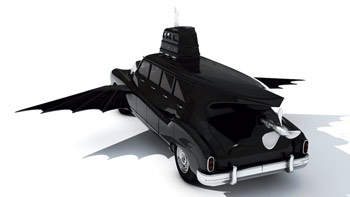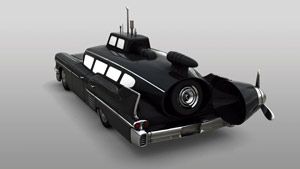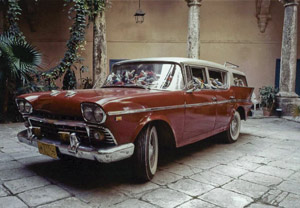(Dedicated to Rafael Diaz-Casas)
“The sea is everything. It covers seven tenths of the terrestrial globe. Its breath is pure and healthy. It is an immense desert, where man is never lonely, for he feels life stirring on all sides. The sea is only the embodiment of a supernatural and wonderful existence. It is nothing but love and emotion.”
Jules Verne (1828 -1905), The Man of the Seas
“The dog-gone circumstance of having water everywhere forces me sit on the coffee table. Wouldn’t I think that water surrounds me like a cancer, I would have slept like a log. As the boys take their clothes off to take a swim, a dozen people were dying from compression in a room….”
Virgilio Piñera (1912-1979),La isla en peso
“In the town where I was born
Lived a man who sailed to sea
And he told us of his life
In the land of submarines
So we sailed on to the sun
Till we found a sea of green
And we lived beneath the waves
In our yellow submarine
We all live in a yellow submarine
Yellow submarine, yellow submarine
We all live in a yellow submarine
Yellow submarine, yellow submarine”
The Beatles, Yellow submarine, 1969
 Esterio Segura’s new installation project for the 11th edition of the Havana Biennial (2012) implies the construction of a number of handmade underwater limousines and cars to be deployed along the Malecon seawall and other city areas in a bid to let the public embark on an unusual fantastic journey. Taking a look at the project for the first time, three recurrent ideas pop up. The first is the profoundly romantic ties the authors on firm ground have with the sea. For Jules Verne in France or Ernest Hemingway in the U.S., as well as for other authors from around the world, the sea and the ocean become metaphors of life, love, pleasure, accompaniment, loss, reconciliation and, finally, even birth. As a contrast, a second idea is the special bond and the ongoing struggle between the Cuban people and the island nation –their island, their home and their homeland. The same thing happens with Cuban poet Virgilio Piñera, whose work entitled La Isla en Peso tends the express the sorrow for permanently living surrounded and hemmed in by water, as if it were a curse. In his words, the sea becomes an allegory to pain, despair, abandonment and, finally, death. A third idea points to the dreams and children’s games, speaking of the imagination that evolves from the instinctive need to understand the world in its full scope, including the limits drawn by the sea.
Esterio Segura’s new installation project for the 11th edition of the Havana Biennial (2012) implies the construction of a number of handmade underwater limousines and cars to be deployed along the Malecon seawall and other city areas in a bid to let the public embark on an unusual fantastic journey. Taking a look at the project for the first time, three recurrent ideas pop up. The first is the profoundly romantic ties the authors on firm ground have with the sea. For Jules Verne in France or Ernest Hemingway in the U.S., as well as for other authors from around the world, the sea and the ocean become metaphors of life, love, pleasure, accompaniment, loss, reconciliation and, finally, even birth. As a contrast, a second idea is the special bond and the ongoing struggle between the Cuban people and the island nation –their island, their home and their homeland. The same thing happens with Cuban poet Virgilio Piñera, whose work entitled La Isla en Peso tends the express the sorrow for permanently living surrounded and hemmed in by water, as if it were a curse. In his words, the sea becomes an allegory to pain, despair, abandonment and, finally, death. A third idea points to the dreams and children’s games, speaking of the imagination that evolves from the instinctive need to understand the world in its full scope, including the limits drawn by the sea.
A child’s fantasy and pretentions –let alone being fun and creative- carry the symbolic potential of going ignorance and difficulties one better as they hide the fact that social conditions will prevail sooner or later. During the growing process, that kid will have to cope with the possible and the impossible. From a different perspective, an adult’s island condition feeds on a nonstop yearning for leaving, either flying or sailing. That necessity to take off toward seemingly promising places in order to lead a better life goes hand in hand with a profound and implicit desire to return and “get back to where you once belonged”. In the same way, the child and the islander are both restrained from meeting their imaginary goals due to the surrounding social circumstances, whatever they might be. By coming up with a number of underwater limousines and cars, Esterio Segura tackles all those issues and circumstances by means of a theatrical gesture, by inviting everybody to sally forth out of Cuba.
 In the romantic literary period, sailors’ idealism and bravery –those bold explorers and discoverers of new lands teeming with unknown foliage and wildlife –the material in the raw of strange tales that generally come along with motley illustrations. One of them is the lyrical creation Balada del marinero de antaño, authored by Samuel Taylor Coleridge in the late 18th century. This piece has been performed time and time again since it was first published centuries ago, construed as a Christian parabola and political allegory. The topic of this epic poem spins around a sailor who, having returned from his incredible journey, is briefed by a wise hermit to “let go of” all his “evils” and with that view in mind learn from the past and be able to stick to the social order, tell his story to unknown people. It’s all about a ritual that appears to be “a cleansing” or what today we know as “politically correct” stuff. On the other hand, we have the example of the 19th-century play Moby Dick by Herman Melville, that makes reference to the limits of knowledge, the misleading destiny, the exploiting nature of whaling, alongside other abusive activities such as buffalo hunting, gold digging and unfair trade with indigenous people that marked the territorial expansion of both Europe and the U.S. Later on, in the early 20th century, Twixt Land and Sea, by Joseph Conrad, includes a story entitled The Secret Sharer that has also sparked off countless interpretations, even leading Conrad to say: “let them think what they want, but I had no intention to get drowned. I had the intention to swim until I could sink –but it’s not the same.”
In the romantic literary period, sailors’ idealism and bravery –those bold explorers and discoverers of new lands teeming with unknown foliage and wildlife –the material in the raw of strange tales that generally come along with motley illustrations. One of them is the lyrical creation Balada del marinero de antaño, authored by Samuel Taylor Coleridge in the late 18th century. This piece has been performed time and time again since it was first published centuries ago, construed as a Christian parabola and political allegory. The topic of this epic poem spins around a sailor who, having returned from his incredible journey, is briefed by a wise hermit to “let go of” all his “evils” and with that view in mind learn from the past and be able to stick to the social order, tell his story to unknown people. It’s all about a ritual that appears to be “a cleansing” or what today we know as “politically correct” stuff. On the other hand, we have the example of the 19th-century play Moby Dick by Herman Melville, that makes reference to the limits of knowledge, the misleading destiny, the exploiting nature of whaling, alongside other abusive activities such as buffalo hunting, gold digging and unfair trade with indigenous people that marked the territorial expansion of both Europe and the U.S. Later on, in the early 20th century, Twixt Land and Sea, by Joseph Conrad, includes a story entitled The Secret Sharer that has also sparked off countless interpretations, even leading Conrad to say: “let them think what they want, but I had no intention to get drowned. I had the intention to swim until I could sink –but it’s not the same.”
Just like the possible readings and interpretations Esterio Segura’s eccentric handmade submarine will get, it’s foreseeable –though restrictive- lodge his project for this Biennial within the history of Cuban art in the 1990s, the result of decades of constant political transformations that had ripple effects on Cuba’s arts and culture. In time, this kind of canonic Cuban art has developed a concomitant international market, with request on the part of collectors, curators and art experts; a system Cuban artists are somehow accomplices of.
However, this particular body of work by Segura breaks free from the basic reductionism of that international market of Cuban art by delivering other levels of critical reading. For instance, indirectly the image of the submarine resembles the artist’s career and could be construed as an analogy to his childish fantasy of carrying through and finding fresh, new and fertile grounds to get his narrative job done. On the other hand, the piece symbolizes the ongoing phase of his conceptual work by imitating the naïve and quality craftsmanship of the “Made in Cuba” label. This is something he manages to create thanks to his underwater limousines and cars in some sort of collage made of junk pieces from the bodies of the cherished vintage cars built in the 1950s.
Just like in some of his previous series, Esterio Segura’s submarines derive in a fictitious tale written by the artist. The narration, fable or parabola speaks of another island called Cuba, with the same geographical coordinates, the same shape, the same topography, the same crocodiles and manatees. The only difference is that this twin Cuba is an untapped and uninhabited island. The history also counts on a fictitious multidisciplinary group made up of a naval engineer, a mechanic and an artist who will jointly design and build the submarines. To enhance this fable, Segura is inviting both Cubans and foreigners to visit the Havana Biennial, and who might be willing to embark on that sailing to the new world, to take off in one his adapted submarines. Thus, this crazy idea seems to bring back the echoes of the Beatles’ Yellow Submarine movie, as well as the illusion we all live in a (yellow) submarine. His message on the freedom to choose a life full of happiness, peace and fraternity sounds somewhat idealistic and romantic today, yet in its time a few decades ago people from all walks of life and from all around the world embraced that idea.
Despite the piece’s various meanings, in his effort to turn the story into a work of art, Segura had to simultaneously open several workshops all across Havana to build the submarines. Taking this manufacture in an environment stripped of resources or marked by a scarcity of means is a monumentally ambitious task that no doubt lays bare the artist’s ability to make the impossible come true.
 While visiting one of the workshops for a closer look at the progress his employees were making trying to transform a car into a submarine-artwork, the expression “necessity is the mother of ingenuity” suddenly panned out to be so commonplace. What I saw was the way Esterio Segura was becoming a top-of-the-line pillar of an outstanding and generous enterprise. The ideological subtexts are also worth considering here because Segura, like many other artists who live and work in today’s Cuba, believe that transcendental creeds can actually become real.
While visiting one of the workshops for a closer look at the progress his employees were making trying to transform a car into a submarine-artwork, the expression “necessity is the mother of ingenuity” suddenly panned out to be so commonplace. What I saw was the way Esterio Segura was becoming a top-of-the-line pillar of an outstanding and generous enterprise. The ideological subtexts are also worth considering here because Segura, like many other artists who live and work in today’s Cuba, believe that transcendental creeds can actually become real.
A number of parallelisms can be established between Esterio Segura’s poetics and Jules Verne’s celebrated sci-fi novel “20,000 Leagues of Underwater Journey”. One of them is the research that a project of this scope actually takes. And Segura has certainly delved into Cuba’s naval history and the background of Caribbean’s submarines, from the first models that sailed during and after World War II –like Foxtrot and Whisky- all the way to the Russian-made nuclear submarines built in the former dock of Leningrad, today’s St. Petersburg.
In the same breath, Jules Verne introduced a research mixture in the 19th century on oceanography, marine sciences, navigation maps and naval wars. Likelihood is that Jules Verne, as a member of the literary halls of 19th-century Paris, probably met Cuban poet Jose Maria Heredia y Heredia (1842-1905), a nephew of great Cuban poet Jose Maria Heredia’s (1803-1839). That explains Verne’s notion of Cuba and his description of the places the Nautilus visited. As an illustration, in some episodes within the adventure, Captain Nemo’s ideology came up as he stood for the rights of displaced, homeless and repressed people in India, Asia and Africa. Verne also relied on the 1866 work by Victor Hugo entitled The Sea Workers, in which a passage speaks of workers who fight against a humongous octopus that symbolizes the industrial revolution that had started circa 1750. Later on, he kind of paraphrases this idea in a scene in which the crew of the Nautilus struggles with a gigantic squid, an allusion to the European revolutions of 1848.
Rereading Verne’s book and scouring the illustrations of today, it’s just amazing to see how aboard the Nautilus all characters are outfitted with a number of prophetic inventions. We should wonder, why not try to prophesize the current times? And given the fact that the main theme of the 11th Havana Biennial this year is Artistic Practices and Social Imageries, this appears to be the right time to let imagination fly high and start playing with new prophecies, like the possibility of having a “Made in Cuba” submarine that could take us to a completely unspoiled island that lies under the ocean.
Esterio Segura’s new submarines are not thought out for the physical escape staged by the “rafters”, but are rather designed as artworks ready to transport everybody into a fantastic and symbolic trip, as well as to imagine and grow in a new world. His intention is to make us dream, long for, project and, perhaps, even prophesize about a new era, a homecoming to the hearth of all Cubans and non-Cubans.
New York, March 29, 2012
Related Publications

How Harumi Yamaguchi invented the modern woman in Japan
March 16, 2022












